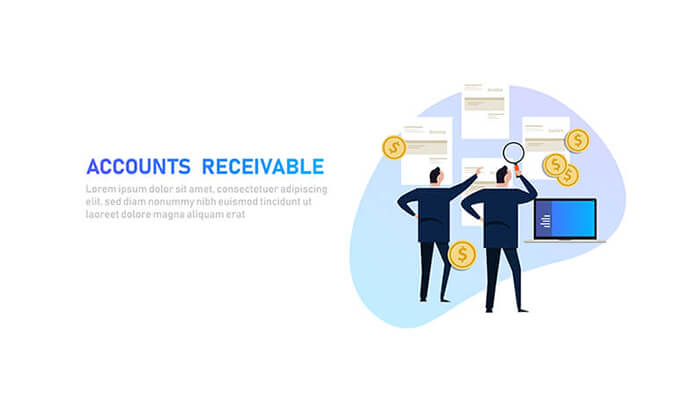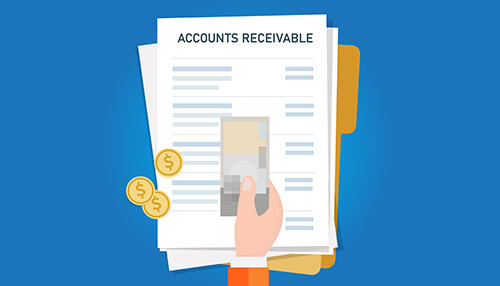When you start a business, you hope you’ll get as many clients as possible. The more clients, the faster your business will grow. However, not every customer you work with is always in a position to pay for products or services right away. As a business person, you have the power to decide how you can help these patrons. For example, you can choose to reserve the products they want and give them once they pay for them entirely. On the other hand, you can decide to offer them help via the accounts receivable option. However the success of accounts receivable depends on how you manage them.
This post defines account receivable management and discusses some practices you can do to improve its efficiency. Continue reading to learn more.
What’s Accounts Receivable Management
Before defining what accounts receivable management is, it’s better if you understand what accounts receivable is.
Accounts receivable is the money your customers owe you after purchasing your products or services on a payment plan or business credit. As a business person, you must follow up on this money to avoid losses. The process of following up on the money your clients owe you is what’s called accounts receivable management.
Apart from avoiding losses, accounts receivable help in:
- Forming a happy customers relationship;
- Timely payments; and
- High liquidity in your business.
These benefits are achieved with proper accounts receivable management. Poor accounts receivable management can result in:
- Loss of revenue;
- Wasting staff’s time;
- Poor cash flow; and
- Accounting errors.
Best Practices To Effectively Managing Your Company’s Accounts Receivable
Below are some practices you can carry out to ensure efficient accounts receivable management:
1. Evaluate Your Clients’ Credit History
You can’t trust anyone you sell your products or services to in business. Unfortunately, this means not everyone qualifies for accounts receivable. So, you may wonder how you will choose the clients to trust and which ones not to. One way to help you decide is to run a background check on your client’s credit and financial history.
It’s advised that you offer accounts receivable options to clients in a good financial situation. This means these clients have a constant source of income, so it wouldn’t be an issue for them to make their monthly or weekly payments. Meanwhile, their credit history will show you whether they pay their debts on time or not.
2. Upgrade To Electronic Billing and Payment
With the development that’s taking place, the use of paper has significantly reduced. For instance, sending letters has advanced to sending emails. Additionally, businesses now prefer to store their data digitally in spaces such as the cloud instead of storing them on paper files. Therefore, it’d be best if you also considered doing it electronically regarding accounts receivable management.
Electronic billing and payment are advantageous to your business because:
- It eases record-keeping in terms of the amount clients owe you;
- It’s easy to track your clients’ financial records regarding whether they’re making their payments as expected; and
- It minimizes the risk of human error.
Moreover, doing things electronically eases your clients’ work. For instance, you can send invoices to your clients. These invoices can contain links that clients can use to make their payments. In return, this system will automatically update payment records on your behalf.
3. Make Your Billing Process Clear
Having a straightforward process isn’t only beneficial to you but also to the people you work with. You can do this by documenting the processes involved in your accounts receivable management.
Some of the factors you may want to include in your process are:
- Dates for sending invoices. They should be sent on time to serve as a reminder to clients and give them enough time to prepare themselves financially;
- What information should be included in the invoices? For example, you may include order numbers for the purchases made and the address;
- The billing contact for your clients;
- Payment details for every client; and
- Collection procedure to follow for the clients that have overdue payments.
4. Offer Penalties And Incentives
As it’s said, people are different. This means the clients you deal with can’t be the same. For example, some take deadlines seriously and wouldn’t want to offend you. On the flip side, some always have a reason for their delayed payment. In business, you must find ways to avoid dealing with the latter.
One of the ways you can do that is by setting incentives and penalties. Case in point, you can consider offering incentives to clients who always make their payments on time by giving them a discount. This will encourage many clients always to make their payments before the deadline as they want to spend less.
Meanwhile, penalties are used on clients with overdue payments. For instance, you can set a percentage of the amount clients have to pay when they’re late. This will reduce late payments as no one enjoys paying extra money. In addition, this method is better because follow-up calls and emails don’t always work every time.
5. Have Multiple Payment Options
In today’s world, there are many payment options that you can use for your business. Offering various payment options to your clients is better because of the following reasons:
- You’ll reduce the chances of delayed payments if you’re using one payment option and it fails when your clients want to use it.
- People have different preferences. Multiple payment options will allow clients to use the option they feel comfortable with. Some clients prefer making payments using the bank-to-bank method. In contrast, others find it easier to use options.
Yet it’d help if you didn’t offer any payment option. You should consider three main factors when selecting the payment options your clients will be using. They’re:
- Safety;
- Speed; and
- Convenience
6. Schedule For Accounts Receivable Analysis
It’s normal to analyze your business’s performance, and accounts receivable are no exception. You can choose to review your accounts receivable on a weekly, bi-weekly, or monthly basis. These reviews will help you know which parts are performing well and which need improvement. Apart from that, you can look into other matters such as:
- Accounts that have many days and large amounts overdue;
- Clients that are unreachable and find ways that you can deal with them;
- Whether it’s a good idea to hold offering accounts receivable option to clients; and
- Coming up with management decisions that’ll be helpful for the business.
Summing It Up
Various clients walk into your business and expect you to work with them. Some of these clients may not have the amount needed to purchase your services or products. One way you can work with these clients is through accounts receivable. Nonetheless, accounts receivable will be helpful in such a situation depending on how you manage it.
If you’re in business and looking for ways to manage accounts receivable, then you’re in the right place. You can use this feature to learn practices for efficient accounts receivable management. All the best for your business.




